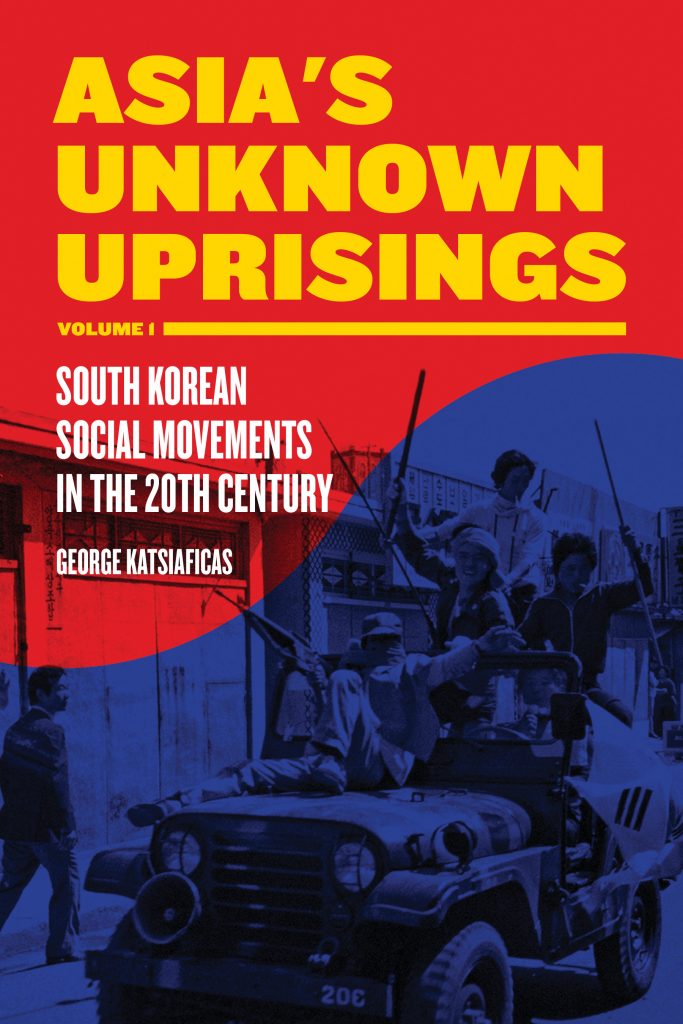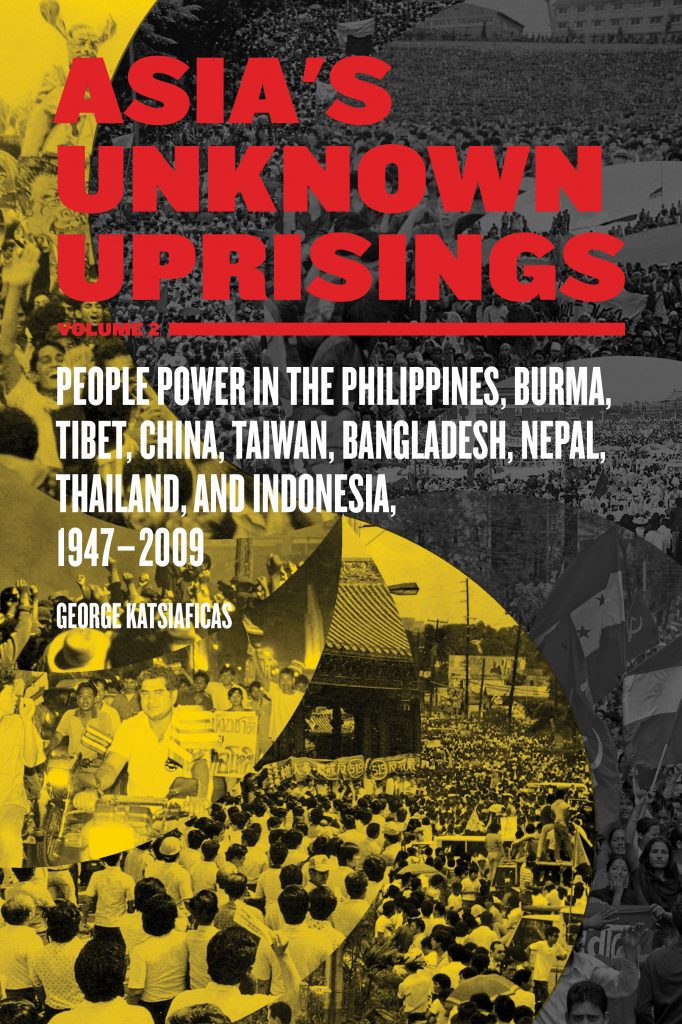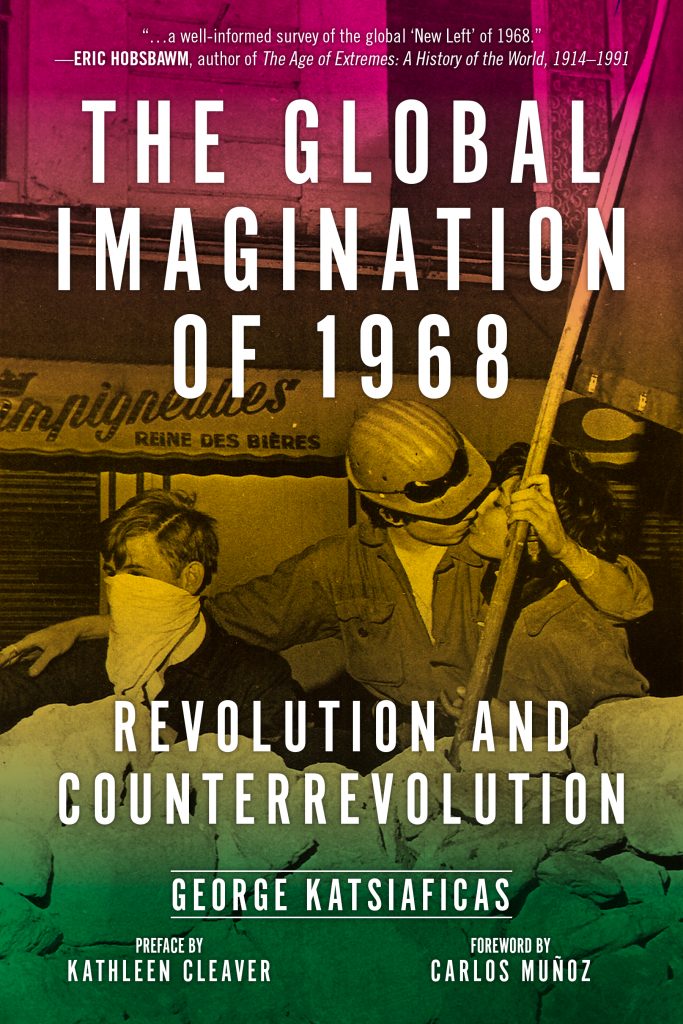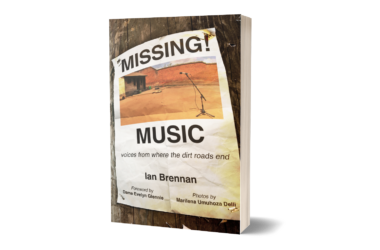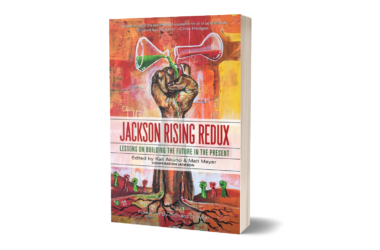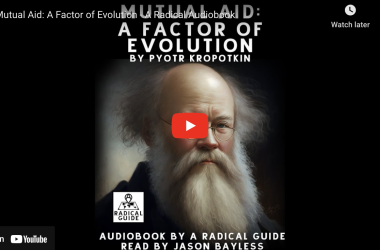Exploring the roots of modern antifa in the German Autonomen movement of the eighties: an interview with George Katsiaficas
By Nick Smaligo
New Inquiry
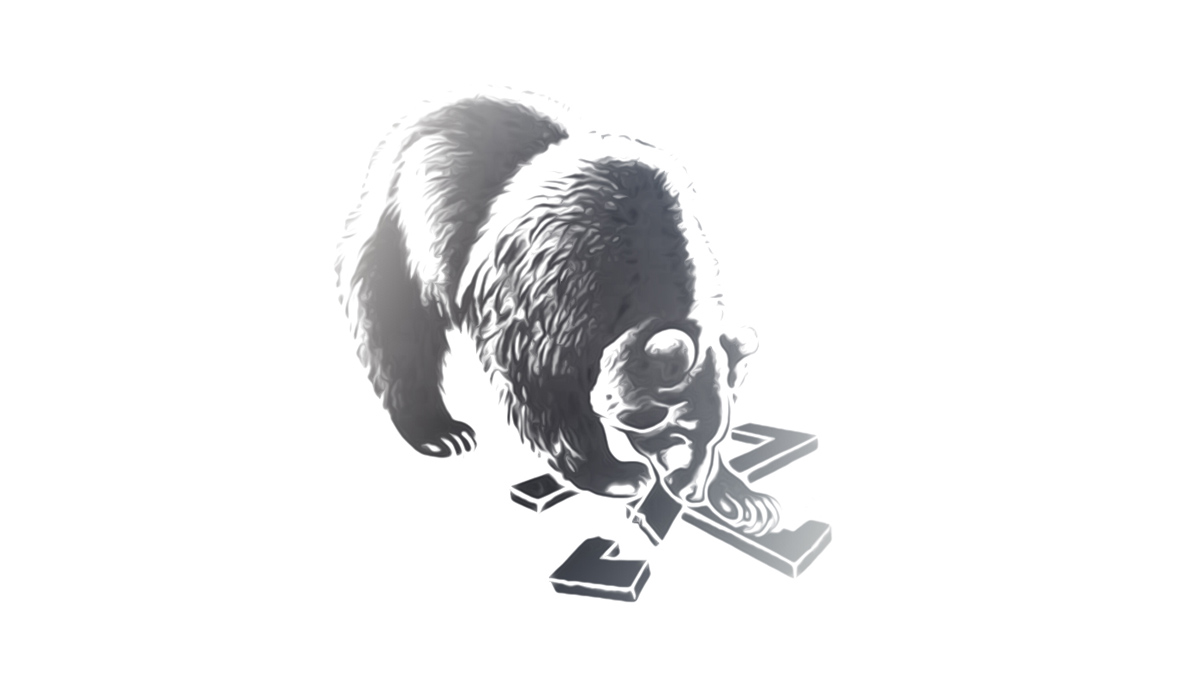
Antifascism has been around as long as fascism, and the abbreviation antifa goes back as far as German resistance to the Nazis. Recently, antifa has become a household word after a series of widely covered confrontations between white supremacists and anti-fascists. But there is much more recent prehistory in Germany that has been overlooked by many commentators: the Autonomen, or “autonomous movement,” of the 1980s, which developed the infamous “black bloc” tactic and violently stopped neo-Nazi pogroms against immigrants after the fall of the Berlin Wall.
George Katsiaficas was once described by an Italian journalist as “the father of the black bloc.” He is the author of the most important history of the Autonomous movement, The Subversion of Politics: European Autonomous Social Movements and the Decolonization of Everyday Life (AK Press, 2006). He has been an activist since 1969 and has written about social struggles across the globe.
In this interview, Katsiaficas discusses the origins of the autonomous movement, the difference between violence committed by oppressors and violence that aims to stop oppression, and the basic human impulse toward autonomous organizing.
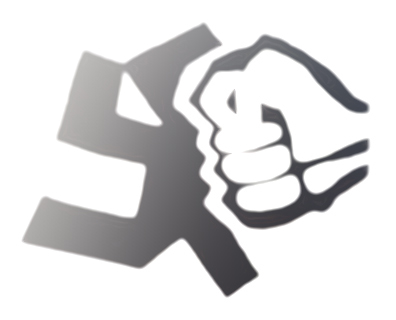
Can you describe some of the origins and distinguishing practices of the Autonomen movement in Germany in the late 1970s through the 1990s?
The Autonomen distinguished themselves as autonomous from the nation-state, since the nation-state was seen as irrelevant. They wanted to destroy nation-states and build power from below: grassroots popular power. Some people called these movements “anarchist,” but at that time the movements themselves did not really refer to themselves as anarchist.
There were several different streams of activism in Germany in the late 1970s: Feminist activists were challenging patriarchy in everyday life and peace activists were challenging the premises of the Cold War and the buildup of American arms in West Germany. The housing situation was desperate for many young people, who had moved to Berlin to avoid the draft. The hundreds of empty buildings, particularly along the Berlin wall, began to be occupied and renovated by their occupants. This became known as a “squatters movement,” or Instandbesetzung, which meant “occupy and renovate.”
At the same time, the German nuclear power industry told foreign buyers they would bury nuclear waste from around the world in a disposal site in Gorleben, in a part of West Germany that jutted into East Germany. When protestors carried out a nonviolent sit-in at Gorbelen, the police attacked, beating them mercilessly. There was a very strong anti-nuclear power movement that constructed a village out of felled trees called the Free Republic of Wendland. When I went to Gorleben, no one knew when the bust would happen, but when it happened, we immediately had a demonstration that night in Berlin, and the police teargassed and broke up that demo as well. Peace activists were harassed and not really permitted to demonstrate openly. The squats were attacked one by one by the police, so they developed a system of alarms so that hundreds of people could be mobilized to defend any of the houses at a moment’s notice. Ultimately, a council of people began meeting in Berlin and in other major cities and slowly but surely formed an identity that comprised all these wings called the “autonomous movement.” It was greater than the sum of its parts.
The self-defense units morphed into what became known as the “black bloc”: people who dressed all in black so they could not be identified later with cameras carried by the German police. Slowly the identity of the autonomous movement spread throughout Europe, eastern and western Europe, and became a continent-wide identity for people who thought of themselves as “autonomous,” meaning they were against the hierarchies of government and had no respect for representative “democracy.” They organized themselves autonomously, meaning separately from political parties, from the government. They made decisions through direct democracy and consensus; seldom if ever were there votes to determine a majority view. In all these various German movements there was also tremendous international solidarity.
After the fall of the Berlin Wall, there was an increase in neo-Nazi activity in Germany, with pogroms erupting in cities like Rostock and others. How were the Autonomen influential in anti-fascist activity at the time? Would you say they were successful?
Several months before the wall fell in November 1989, a national alliance of “Antifa” had formed, with organized groups in 10 cities in West Germany, with contacts to activists in 12 other West German cities. In 1990, the autonomist movement took the offensive in Germany. They took over the Mainzer Straße in (formerly) East Berlin, which became an entire block of occupied buildings. There was a women’s house, a gay house, bars, a movie theater, bookstores, all kinds of places to have events and live. This was one year after the wall came down and one month after German reunification. The Mainzer Straße was evicted, but only after a prolonged struggle of many days in which people fought with Molotov cocktails against heavily armed police with cranes, helicopters, all kinds of things.
But soon the neo-Nazi counteroffensive became evident in Hoyerswerda, where Vietnamese and Angolan migrant workers came under attack. Then next year in Rostock, Vietnamese and Roma settlements were attacked. The police basically stood by: They even told the right-wingers, who were against immigrants, that they [the police] would do nothing. The immigrants did escape, fortunately, but a mob of more than 1,000 people continued their attack for more than a week. In that period of time, pogroms spread to more than a dozen cities. The police and fire department in Rostock refused to intervene. It was only when autonomous activists from the big cities, in particular, but from many cities—Hamburg, Berlin, Göttingen—converged on the city of Rostock that they were able to stop the pogrom.
The police, when the Autonomists arrived, arrested 100 of them, which was the same number of right-wingers they had arrested in the entire week of very violent attacks on immigrants. The police basically sided with the right-wingers in those moments to try to enervate the autonomous movement. Of course the immigrant groups were extraordinarily impressed that some Germans would come to their defense, and alliances were built that would last for many years.
But in the same period of time five Turkish people were killed in the small village of Mölln, and a year later in Solingen, again, five Turkish women were burned to death, in May of 1993. So the neo-Nazi offensive was quite long-lasting. Between 1990 and 1994, neofascist violence resulted in the deaths of more than 80 people. For a time, people were quite unclear what would happen because the Republican Party, as it was called, represented anti-immigrant sentiment in city parliament, in state parliament, and in the national parliament. The autonomous movement, at some point, decided not to let these Republican politicians take office. They disrupted their speeches in communities and cities, they attacked their offices, and a great debate arose in Germany, “What about freedom of speech?”; “What about the freedom for elections?” And the autonomist movement was very clear: Once in their history they had allowed the election of Hitler, they had allowed right-wing mobs to run wild on Kristallnacht and similar events, and they weren’t going to let this happen again.
The militant wing of the autonomous movement completely disrupted the Republican Party. The electoral efforts of the far right wing, of the neo-Nazis, fizzled out at some point simply because of lack of support. That lack of support was most graphically demonstrated in candlelight vigils in Berlin in November 1992, when 350,000 people marched against the violence in Mölln; in December, 300,000 marched in Munich, 250,000 in Hamburg, 300,000 in Essen, and 100,000 in Nuremberg. They marched against racism and against violence aimed at immigrants.
But the German government developed a two-pronged approach. On the one side, the constitution was changed to restrict immigration. On the other side, the federal government banned Oi! [right-wing punk-rock] music and raided and closed down CD manufacturing and distribution sites. They banned 11 neo-Nazi groups, who of course could rename themselves and continue to exist. So at the same time as the government cracked down on the Far Right, it restricted immigration and changed the constitution.
Since the injuries, attacks, and murder in Charlottesville, there has been a surprising level of popular approval of anti-fascist tactics of confronting white supremacists. But there are still many commentators on the Left—Chris Hedges, Noam Chomsky, the Southern Poverty Law Center, to name a few—who denounce “violence as such” and think that the best strategy is to leave fascists alone and let the police or the state deal with right-wing extremist groups. What lessons can be drawn from Germany’s experience of “ignoring” neo-Nazis, or leaving it up to the state to deal with them?
Well, as much as I respect Hedges and Chomsky, I must disagree. We saw in Charlottesville that the police stood by while this violence occurred. In San Diego and Berkeley, police protected neo-Nazis. It was the black bloc that cleared the park. I won’t say it was nonviolent, but it was very minimal violence or minimal force that was used to clear the Far Right protesters from Berkeley.
The lesson from Europe is that broad strata of people need to be mobilized: Thousands and thousands of people who are against racism and against hate need to be in the streets. And at the same time, they need to have their own autonomous self-defense teams. The black bloc has served that function.
We can look to the United States for previous incidents; when, for instance, the Vietnam Veterans Against the War protected demonstrators in 1972 in Miami, when we gathered to protest President Nixon being renominated. The police had given those of us in the peace movement Flamingo Park, in the middle of Miami Beach, as a space to converge. People were camped out there, people could arrive and stay there. At a certain point neo-Nazis arrived in uniform and took over the stage we had set up. It was a shock. I remember I was walking with comrades who had just gotten out of Attica and a Black Panther, Bobby Seale’s bodyguard, when this occurred. We were about 50 yards away, but we watched neo-Nazis screaming at people that they were not going to leave, that they controlled our stage, and we watched the Vietnam Veterans Against the War rush the stage and expel them from the park. Many of the veterans were hurt badly, kicked in the face with heavy boots by the Nazis. But they persevered. They overwhelmed the Nazis and evicted them from the park, taking them off the stage without causing major injury.
A few days later, at the rally for imprisoned Black Panther George Jackson, on the first anniversary of his assassination at San Quentin prison, [Black Panther Party cofounder] Bobby Seale was about to speak. I was the MC at the rally in front of the Miami convention center, and I turned around and saw, two blocks away, motorcycle policemen leading hundreds of right-wing Cuban exiles in the direction of the stage. I saw the motorcycle cops take a left turn and leave the right-wing Cubans on a trajectory to come and take over our stage, to disrupt our rally, which was permitted and legal and for which we had prepared long in advance. I announced that the stage was in jeopardy from the microphone, and immediately the Vietnam Veterans Against the War converged on the back of the stage and beat back the right-wing Cuban exiles. So they again defended a stage that was the only platform we had even to speak, to speak publicly about what concerned us. So the Vietnam veterans played the role that the black bloc played today. Of course, the black bloc is a very different constituency—it’s a different time now. But the fact remains: We need organized groups that can defend our diffuse and amorphous protest. And as time goes on, whether Donald Trump remains in the White House or whether Mike Pence replaces him, we are going to need our own self-defense units.
The events you describe are instances of when the Left has legally created a space for protest, and the Right has disrupted it. Recently, one might argue that this situation has been reversed, and elements from the Left or autonomous movements are disrupting the legally sanctioned protests of the Far Right. How would you respond to the free speech argument there?
In the same way that we all recognize that you can’t yell “fire” in a crowded theater, you can’t yell hate speech in public areas. Free speech is very important to me. At MIT I defended a right-winger, “Joe the Polish freedom fighter,” who would attend our demonstrations with a sign that said, “Stop the Jewish Communist conspiracy.” In 1969, Joe was known, harmless, and isolated, and no one regarded him as a threat. When the police arrested him, I pushed down the police and tried to defend Joe. I was almost kicked out of MIT for that. However, when the speech is destructive to human life, when the speech seeks to harm other human beings, I don’t think that’s an example of free speech, I think it’s a misuse of freedom to attack other people, to harm other individuals. I think that the preservation of life, of children, of adults, has to be our primary concern, and none of these neo-Nazi people have been killed, none of them have been seriously injured as far as I know. What has happened is that people seek to prevent them from harming others, which is clearly what their intent is.
In your book Subversion of Politics, you cite Frantz Fanon to discuss the liberating dimension of anti-Nazi violence, and you develop a concept of “civic Luddism” (sabotage of the “machinery” of an oppressive society) to understand the tactics of the black bloc. How do you think such violence is linked to understanding truths about a society that are otherwise imperceptible?
Yes, Fanon is a very important psychologist. In the course of doing clinical analysis of French soldiers who tortured Algerians and of Algerians who killed their former torturers, he discovered that violence can either be liberating or enslaving, that violence is not a flat thing that can be simply understood in a one-dimensional way. Those who had tortured Algerian freedom fighters suffered tremendous depression and guilt in the subsequent time period, while Algerian freedom fighters who had killed the torturers of their comrades and, in some cases, of themselves, felt liberated by the experience, released. Their fears vanished; a cloud was lifted from them. And this was a very important truth that Fanon was able to uncover.
I’d like to point to the Gwangju uprising in 1980 in South Korea. When the military dictatorship sought to renew itself, people in Gwangju continued to protest. And the military, with U.S. approval, sent paratroopers from the front lines with North Korea to Gwangju, and they brutalized the entire city. They bayoneted students, killed taxi drivers who tried to take wounded students to hospital, ripped off women’s clothes, bayoneted women; they arrested the police chief because he would not cooperate with them, even arrested the local army commander General Chung Oong, took him to Seoul and tortured him because he refused to order his men to take part in the violence against the citizens of Gwangju. Many people were killed in Gwangju, but finally the citizens armed themselves and defeated the military. It was an amazing event; at one point it appeared the military would win, because they used M16s, flamethrowers, machine guns against defenseless citizens. But the spirit of the people was such that they refused to submit, and at a crucial moment the city’s transportation workers—that is, taxi and bus drivers—mobilized autonomously, without central directive, more than 100 vehicles to drive down the main street of Gwangju in a column and attack the military position. Of course many of their vehicles were destroyed that night, but people fell in behind the column of vehicles and defeated the military in prolonged fighting.
This event in Gwangju is not considered “violent.” It’s considered anti-violent, because they stopped the violence of the military. So when we say “violence,” we need to be very careful about who has committed the violence, for what ends, and what’s the result of the violence. If it’s the kind of violence that results in the degradation of people, as the genocide against Native Americans did, it’s very different from the kind of violence of fighting back against such degrading violence.
You coin the term “eros effect” to describe “a sudden intuitive awakening of mass opposition to the powers that be.” Do you think we are seeing something like this now with the popularity of Antifa? What other kinds of actions do you think have the potential to spark an “eros effect” today?
I think no one can say what sparks the eros effect—it’s kind of like falling in love. But we can say that exemplary action very often plays a role. I would say that the eros effect is operative at a number of levels, one of them is even in small groups: New friendships emerge, love relationships emerge; when the streets are flooded, as public advocacy scholar Jason Del Gandio has said, there’s a vibe that gets put out, your body gets involved, you get goosebumps sometimes in the middle of these movements.
The best example from what we’ve talked about today are the candlelight protests in Germany, where in 1992, hundreds of thousands of people, more than a million people total, but hundreds of thousands in at least five major cities—and many more in smaller cities and towns—marched against racism, against hatred, and had a profound influence on society. We see Germany today taking a much more progressive stance than the U.S.: The federal government of Germany today has a leader who’s shifted a few times on immigration, but is definitely miles ahead of Trump on the issue of aiding people who have nowhere to go because of wars. I don’t know if she says it, but it’s mainly wars the U.S. has started, or has prolonged, like in Syria. And in the U.S., the president is clearly against immigration, he’s talking about building the wall, he’s talking about “illegals” being criminal, he’s talking about limiting immigration, and he’s helping to spark neo-Nazi protest movements.
So we have a Germany that is far more liberal than the U.S., which has killed millions of people in wars during my lifetime. And, just as it took the international community to put down Hitler and Nazi Germany, I believe it’s going to take prolonged pressure from the international community, combined with movements within the empire, to bring down the wars and oppression of the United States today.


